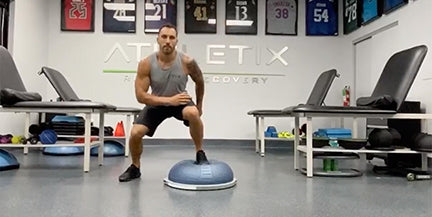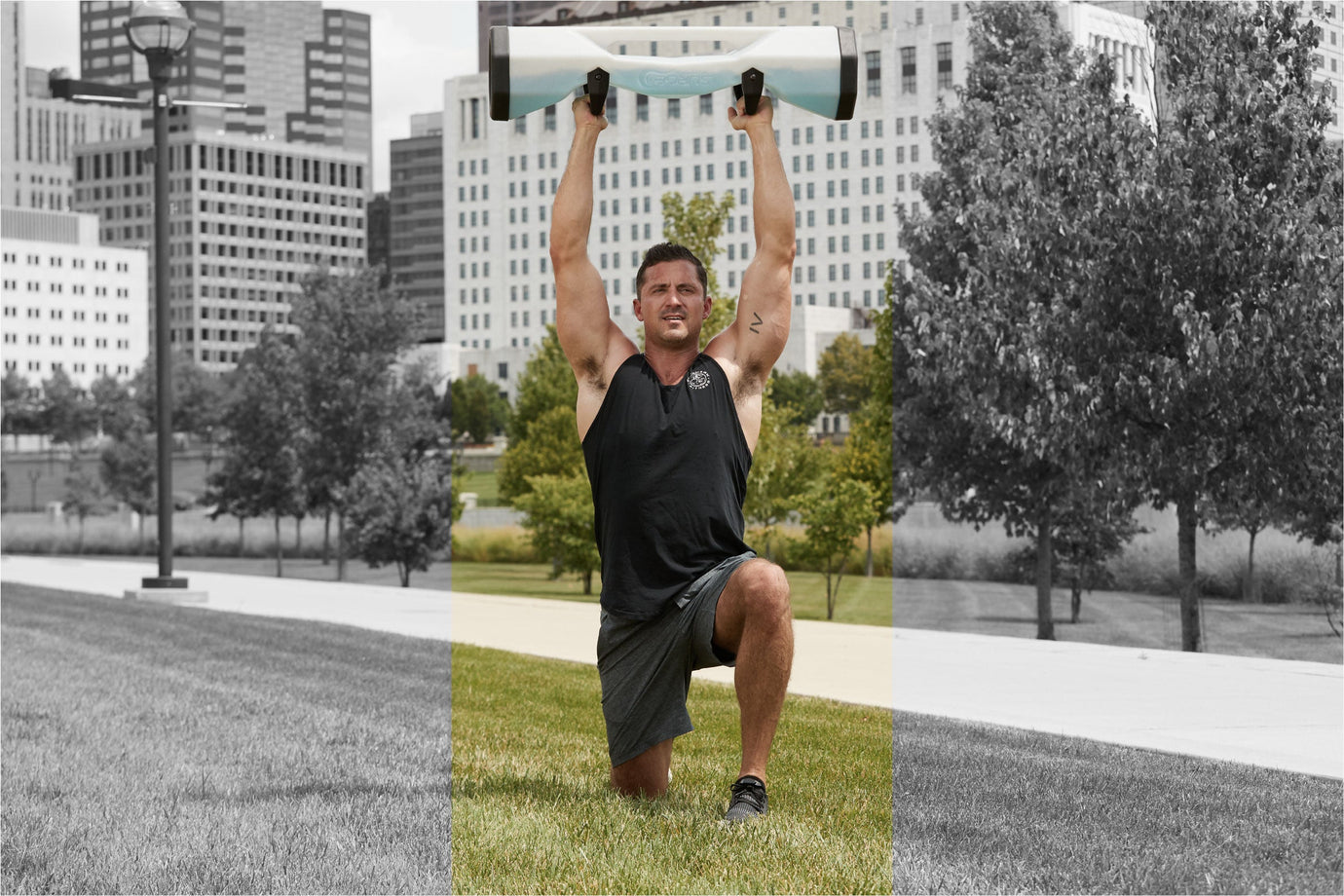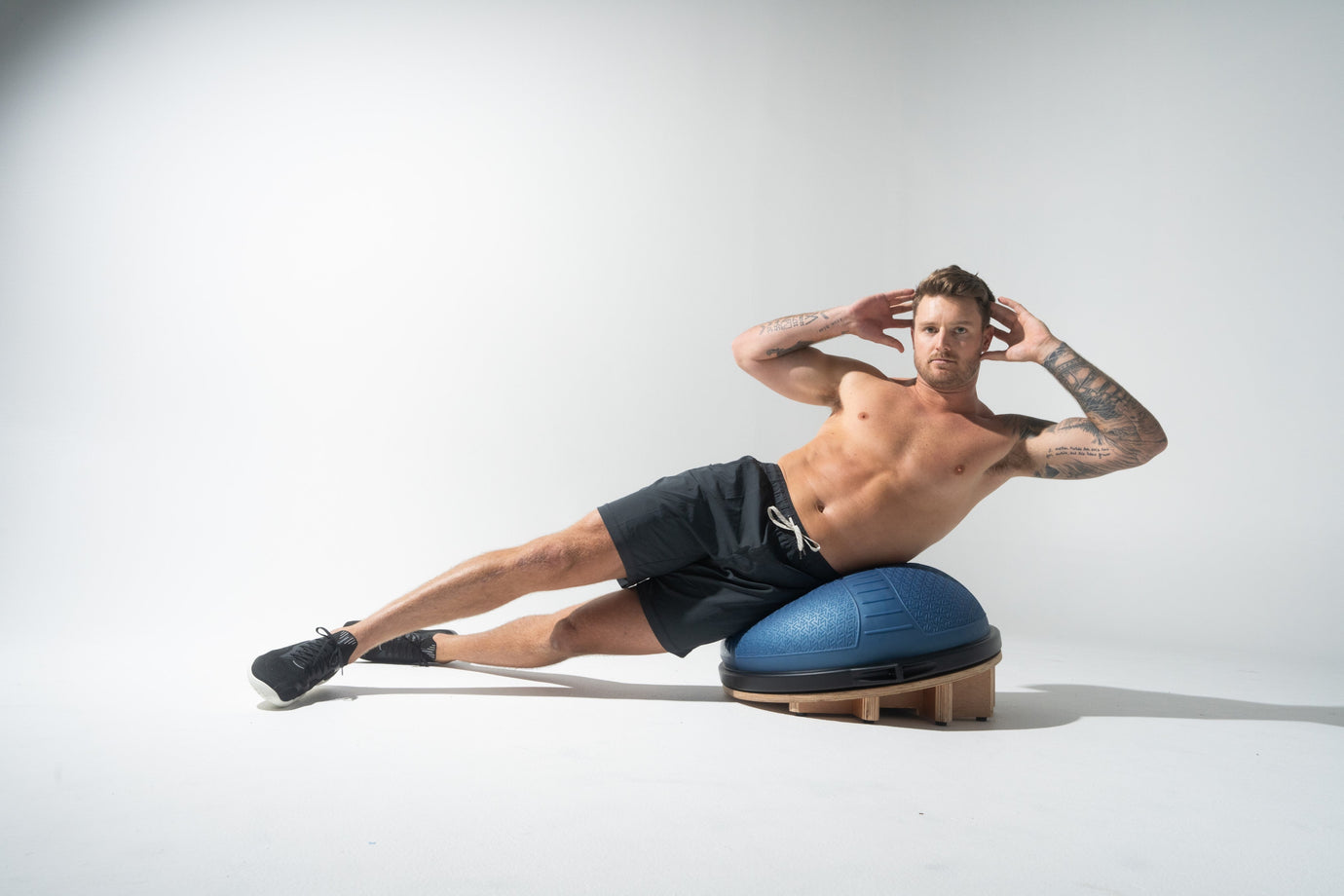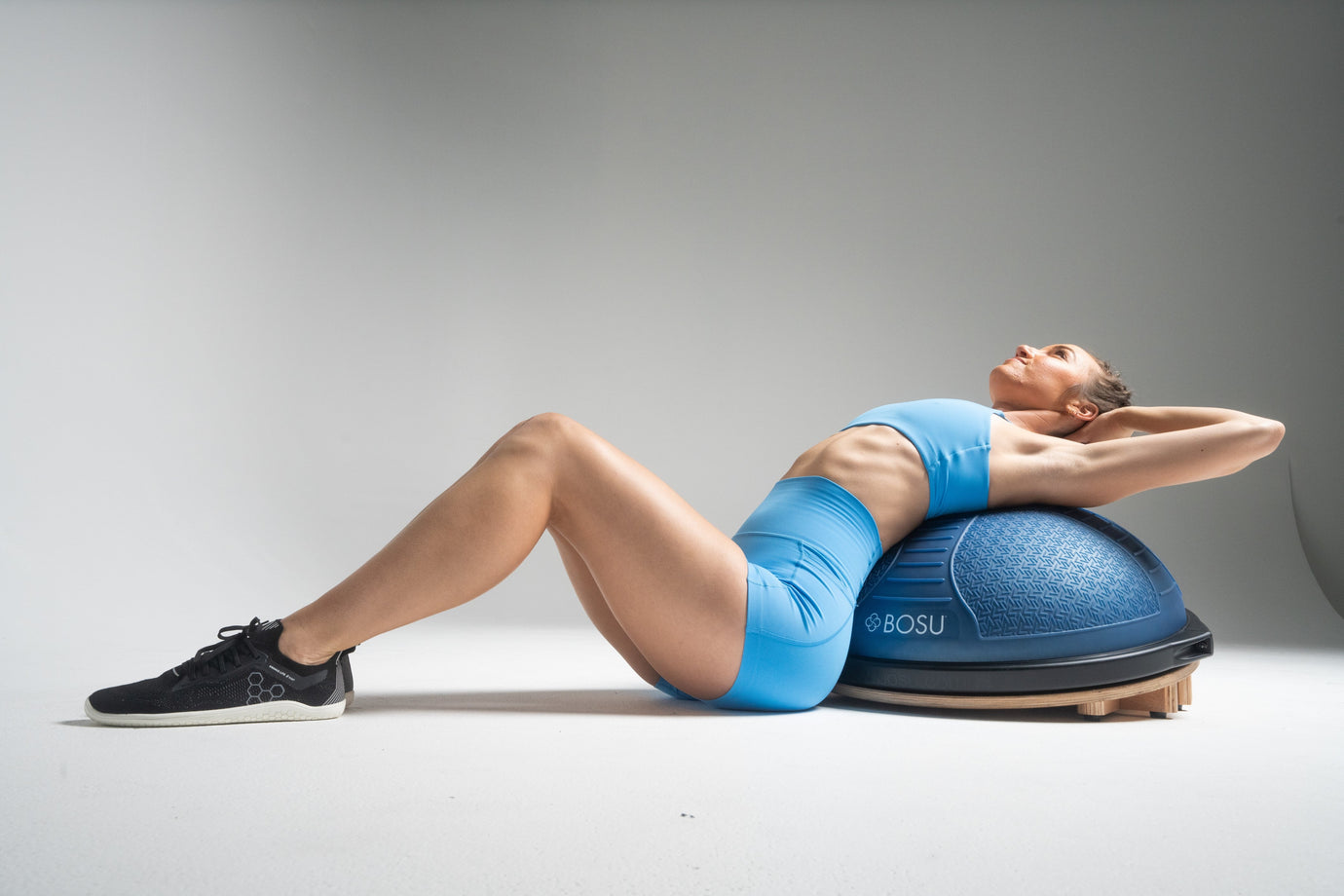How Dr. Reef Uses the BOSU® Balance Trainer to Help Prevent Common Sports Injuries

Sports injuries often result from instability in the lower extremity or an inability to control external forces during sports play such as cutting, landing, tripping or accepting contact. If our muscles fail to adequately control our movement, the force can get transferred onto our tendons or ligament, which are not prepared to withstand high loads and therefore results in injury to these structures. But what can we do to limit the risk of instability related injuries? The answer is multifaceted, but it includes developing proper biomechanical movement patterns, correcting any strength or mobility imbalances in the body, training in all 3 planes of movement and performing proprioceptive training to prepare the body for unpredictable circumstances.
So what is proprioception? According to the American College of Sports Medicine (ACSM), proprioception is “understood to be the sense of knowing where one's body is in space and is composed of static and dynamic.” For example, close your eyes and lift up your right arm, now bring your left arm up to that same positon, now open your eyes. Are your arms both in alignment? How did your body know how to do that without vision? Proprioception! As you can imagine, proprioception also plays a major role in balance and overall body awareness. If an athlete is running down field and gets tripped by an opponent, the proprioception and balance work together to regain their center of mass, restore body control and stay on their feet. If the momentum force is too great for their proprioceptive, balance and neuromuscular system to overcome, it can result in a fall or even injury. This is also true for overcoming any external force such as cutting, change of direction, landing or accepting contact.
So how do we prepare our body for these dynamic situations in sports, improve our overall body control and neuromuscular coordination while also mitigating our risk of injury? Proprioceptive and balance training is part of that answer! This is one of the many reasons that we incorporate so much stability training with the BOSU® Balance Trainer at my clinic Athletix Rehab and Recovery for rehabilitation, injury prevention and performance training alike.
Here are some examples of injuries we often see during sport play resulting from a lack of joint stability and control:
- ACL tear
- MCL sprain
- LCL sprain
- Ankle sprains
The above are all examples of ligament damage in the knee and ankle that can result from an inability to control those unpredictable external forces we discussed above. We can help combat our risk of these injuries by adding some proprioceptive and balance training to our routine to improve our dynamic stability at the hip, knee and ankle. By performing strengthening exercises in an unstable environment, the body must learn to generate strong co-contractions of the muscles around the joints to create stability in order to perform the target movement. There is a saying in physical therapy, “you need proximal stability for distal mobility,” which means you must be able to generate a stable foundation at the center of your body so that you can properly control the mobility of your extremities. So whether you are rehabbing from one of these injuries or trying to prevent them in the first place, check out the following exercises to incorporate some stability training with the BOSU® Balance Trainer! (Disclaimer: If you are currently rehabbing from an injury, be sure to consult with your Physical Therapist prior to incorporating any of the below exercises to ensure you are cleared to do so!)
Heel Taps
Balancing on your right leg on top of the Balance Trainer dome, slowly lower yourself down using your quads until you gently tap your left heel on the ground, and then return to the starting position. Be sure to keep your toes up on the left side, and keep your right knee out and aligned over your toes. Perform 3 sets of 10 reps on each leg.
Eccentric Forward Lunge
Standing behind the Balance Trainer, perform a forward lunge, landing your lead leg on the dome. This will create an unstable surface on which you must decelerate your body weight while creating stability. Press back to the starting position. Perform 3 sets of 10 reps on each leg.
Single Leg Jump – On and Off
Perform a single leg jump landing on the Balance Trainer dome and pause for 1-3 seconds. Then jump off and stabilize the landing on the ground. You can start by jumping off of one leg and landing on the other. Once this becomes comfortable, progress to jumping and landing on the same leg. Perform 3 sets of 10 reps on each leg.
Lunge In Place with Anti-Valgus Band
Get into a lunge stance with your lead leg on the Balance Trainer dome. Place a band around your lead knee, pulling the leg inward. As you perform the lunge in place, you must also overcome the band’s force attempting to pull your knee inward as you keep it outward. This develops neuromuscular control to maintain optimal knee alignment during dynamic activity. Perform 3 sets of 10 reps on each leg.
Multi-Directional Lunges
With one foot on the Balance Trainer dome, perform a step back lunge, followed by a lateral lunge and finally a forward lunge, all while maintaining that pivot foot on the dome. This will develop dynamic stability in multiple planes of movement. Perform 3 sets of 5 reps on each leg.
Check out my Instagram accounts @Doctor_Reef @Athletixrehab and website AthletixRehab.com for more great stability exercises with the BOSU® Balance Trainer!



